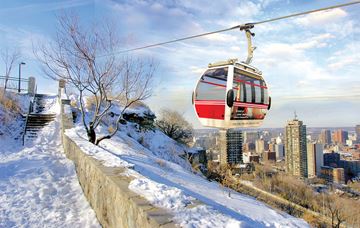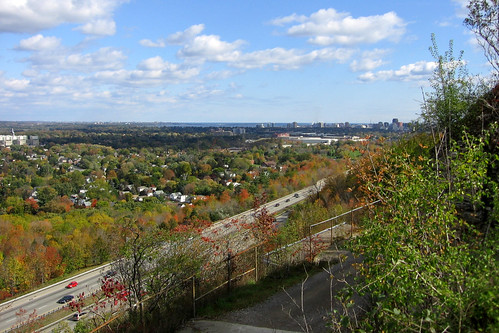NOTE: An earlier version of this post originally appeared on December 4th, 2009 (yup, that’s over 7 years ago, kids). At that time, the report “City of Hamilton Higher Order Transit Network Strategy” was available online. Unfortunately, it is no longer available.
Sometimes we don’t know what we don’t know and that’s really nobody’s fault.
For example:
In the spring of 2007 a working paper by IBI Group called City of Hamilton Higher Order Transit Network Strategy came out. For those who don’t know, Hamilton is a city in southern Ontario that is cut in half by a 700 kilometer long limestone cliff that ends at Niagara Falls. It’s called the Niagara Escarpment and has made higher-order transit connections between the Upper and Lower cities difficult.
In the IBI paper the writers conclude that a connection between the Upper and Lower cities is “physically impossible” and that the Niagara Escarpment Commission might “strongly resist” any new crossings of the escarpment. As such, Bus Rapid Transit (BRT) became the focus and preferred technology of the report. That’s because streetcars and Light Rail can’t handle inclines of more than about 10 degrees. The only way for a rail based technology to work, IBI concluded, was if a tunnel or viaduct was built.
No where in the report, however, was Cable Propelled Transit (CPT) even mentioned, despite cable’s ability to resolve most if not all of the issues IBI highlighted.
It’s no real surprise. Back in 2007 there was virtually no publicly accessible research available on cable. Believe me, I know; I had just started my research in 2007 and it was incredibly difficult to find anything.
Should IBI have considered cable? Should they have known about cable? I don’t know . . . and furthermore, I don’t think it’s relevant to this discussion. What you don’t know, you don’t know and that’s all there is to it.
What is, however, relevant to our discussion is this:

Photoshop of a gondola traversing the Hamilton Escarpment. Image via Hamilton Spectator.
The City of Hamilton is now updating their Transportation Master Plan and they’re surveying the public on their opinions. And the survey includes a question on gondolas. Last summer, meanwhile, around half of the people that responded at Hamilton’s Transportation Master Plan public meetings said they liked the gondola concept.
So why does that matter?
Because in less than 7 years’ time, a large North American city made a complete about-face on this matter. They went from a place where they thought (incorrectly) that a specific transit problem could not be solved with a fixed link solution due to their topography; to a place where they are actively soliciting the public’s opinion on using a gondola to solve the very problem they previously thought couldn’t be solved.
I know people in the cable car industry think seven years is a lifetime. And it is. But not to a large municipal bureaucracy. To a city, seven years is a heartbeat. In a heartbeat, Hamilton went from basically not even knowing cable cars exist to considering it as a part of their overall Transportation Master Plan.
That’s progress no matter how you look at it.
Creative Commons image by John Vetterli


4 Comments